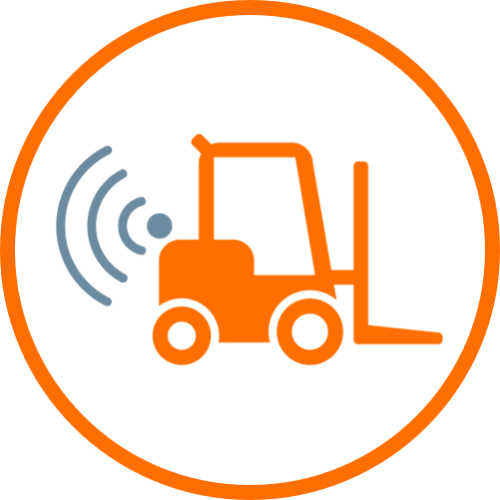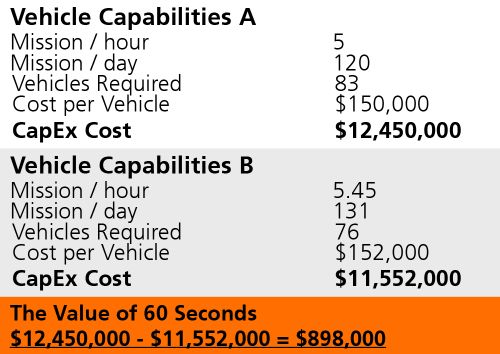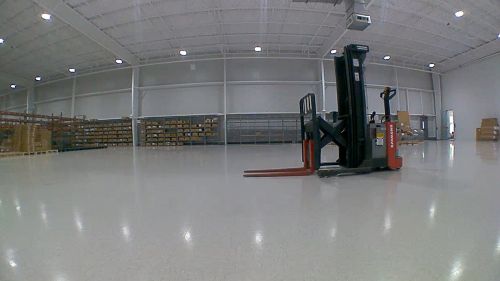
- Autonomous mobile robots
- Technical challenges
Technical challenges for autonomous mobile robots
What holds you back from developing the autonomous mobile robot you want to create? Roadblocks often come from both the engineering and financial fronts.
First, overcoming today's mobile robotics challenges is taking longer – and costing more – than you’d like.
Then, even if you can envision the solution, it will be too expensive. Competition in the robotics world is heating up. Your company’s contribution to the marketplace must make financial sense to end-users.
We’ve explored the engineering challenges in depth. Our solution addresses both the development and financial concerns at once.
You can read more about each topic by clicking the link in each section. To learn how ifm’s mobile robotics solutions can help you, fill out this form or email Tim McCarver.

Your robot is still hitting stuff
Hitting objects holds the entire AMR industry back from mass adoption. Collisions and unexpected stops need human intervention, decreasing efficiency. There’s also the cost to repair the robot or infrastructure, or replace damaged inventory.
Now, developers are adding value by reducing unexpected stops. Doing so increases efficiency and reduces maintenance costs for the end-user.
The key to this is more sophisticated cameras and arrays that create comprehensive 3D vision. But, building that is easier said than done. Integrating 3D technology comes with friction, especially around:
- Complex multimodal perception stacks
- Specialized 3D camera expertise
- Viable off-the-shelf solutions
Read more about the problem statements behind why your robot keeps hitting stuff.
Creating a viable obstacle detection system
AMR developers face two main problem statements for an obstacle detection system:
Floor segmentation
Every facility has unique flooring. They're various degrees of clean or dirty, shiny or dull, brightly-colored or darker in tone.
These variables make it difficult for robots to discern the floor from an object on the floor. There's also a huge number of them for developers to factor in when creating their ODS.
False positives
Robots must discern between real obstacles and harmless artifacts. AMRs will stop for no reason and require a human to restart it.
Along with a camera array, developers must create sophisticated algorithms. Doing so requires significant time and resource investments in real-world missions.
Perception stack compute limitations
Robotics perception requires a staggering amount of computing power. Your system must process huge amounts of data from multiple sources in real-time. Otherwise, your robot can’t make informed decisions while in motion.
Now, more developers are creating perception stacks with multiple cameras and modalities. But that leads to a tough decision: Slower, weaker perception or fewer functionalities. Neither of these options are attractive to end-users.
Read more about overcoming perception stack compute challenges.
Finding the right vendor for third-party solutions
Using third-party solutions lets you develop proprietary systems critical to your core IP. You get to market faster by out-sourcing problems someone else solved.
But, how do you know when a potential vendor really has the answer?
Many times, you’ll discover hardware or software you can use in a few applications. But, they don’t really fit the bill for any of them.
Or, the vendor is too new to the space. Then you could run into maintenance, performance, or compatibility issues down the line.
Read more about finding a vendor that understands your pain points.

Factoring end-user costs and ROI
Whatever design you create for your AMR, it has to be competitive from a cost sense. Retail prices have stabilized over the past few years. Trimming a few hundred dollars off the price doesn’t make an impact anymore.
That puts your focus on efficiency. That way your customer can purchase fewer units from you and still get the throughput of a larger fleet.
That comes down to design – and to obstacle detection. Fewer false positives and better floor segmentation increases efficiency enough to significantly impact ROI.
Before you begin developing, however, you’ll need buy-in. That requires the right end-user ROI calculations to illustrate the benefits.
Read more about ROI and the power of 60 seconds.
Finding off-the-shelf obstacle detection
ifm has virtually brought the first comprehensive ODS to market. We leveraged our decades of experience in the sensor and automation fields. And, we used data from thousands of hours of real-world obstacle detection applications.
The result is a system focused on solving the two big robotics problem statements: Floor segmentation and mitigating false positives.
And, we made sure our dedicated, holistic solution is easy to integrate. That’s whether you want the whole package or just choose from our hardware options.
Read more or browse our obstacle detection solutions.
Gain a competitive edge
Are you ready to take your mobile robot development to the next level? Fill out the form or contact Tim McCarver directly at tim.mccarver@ifm.com.
